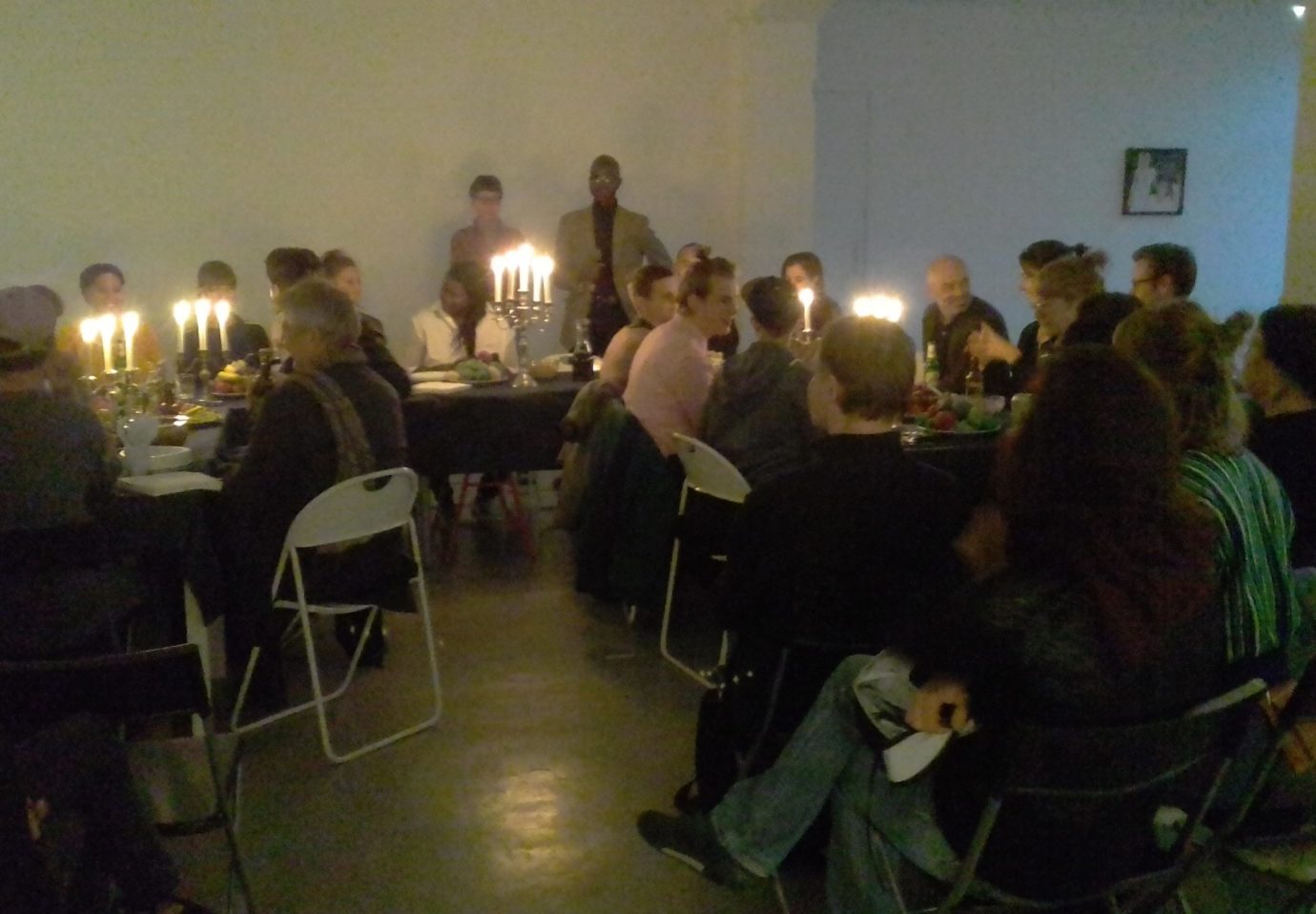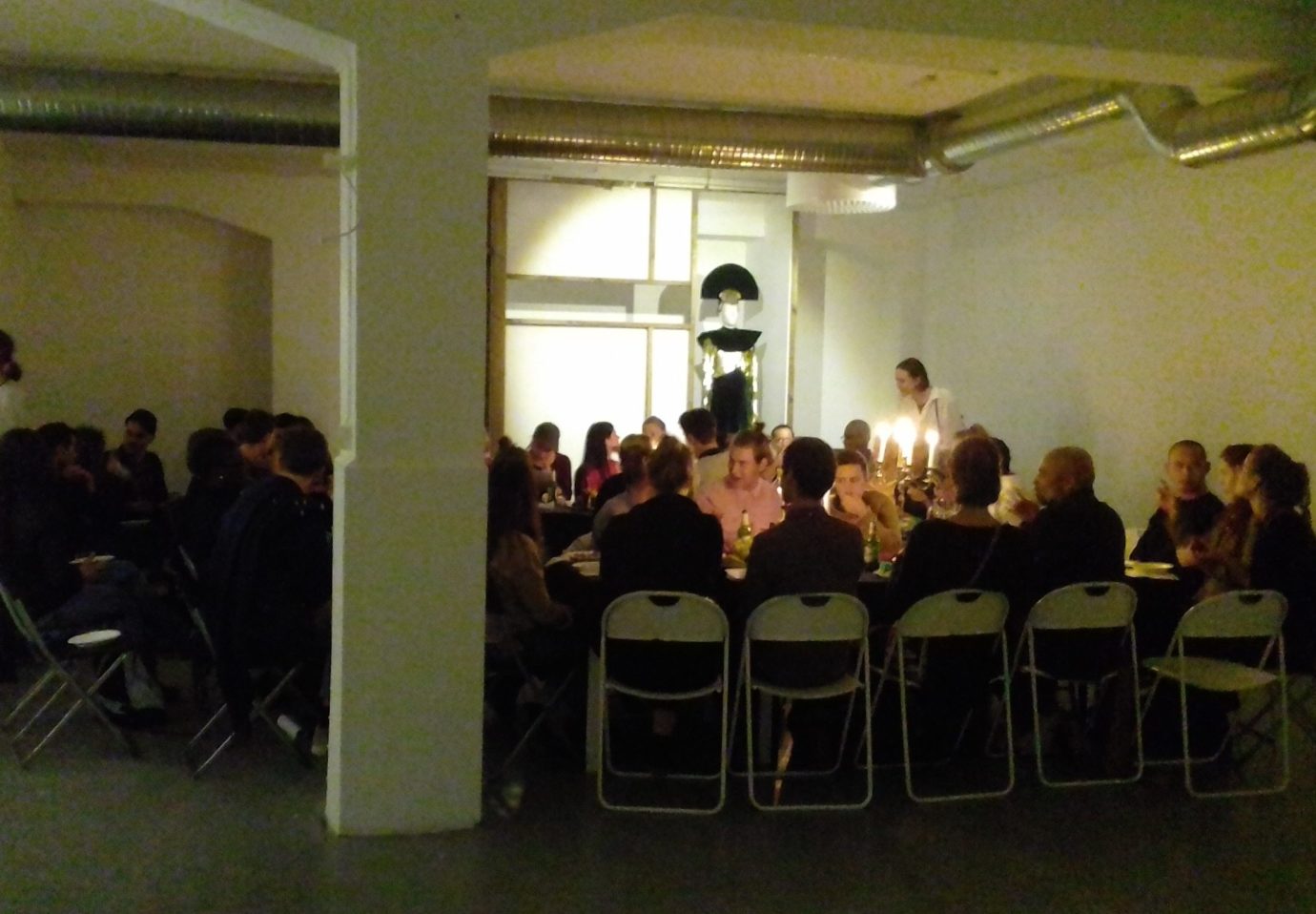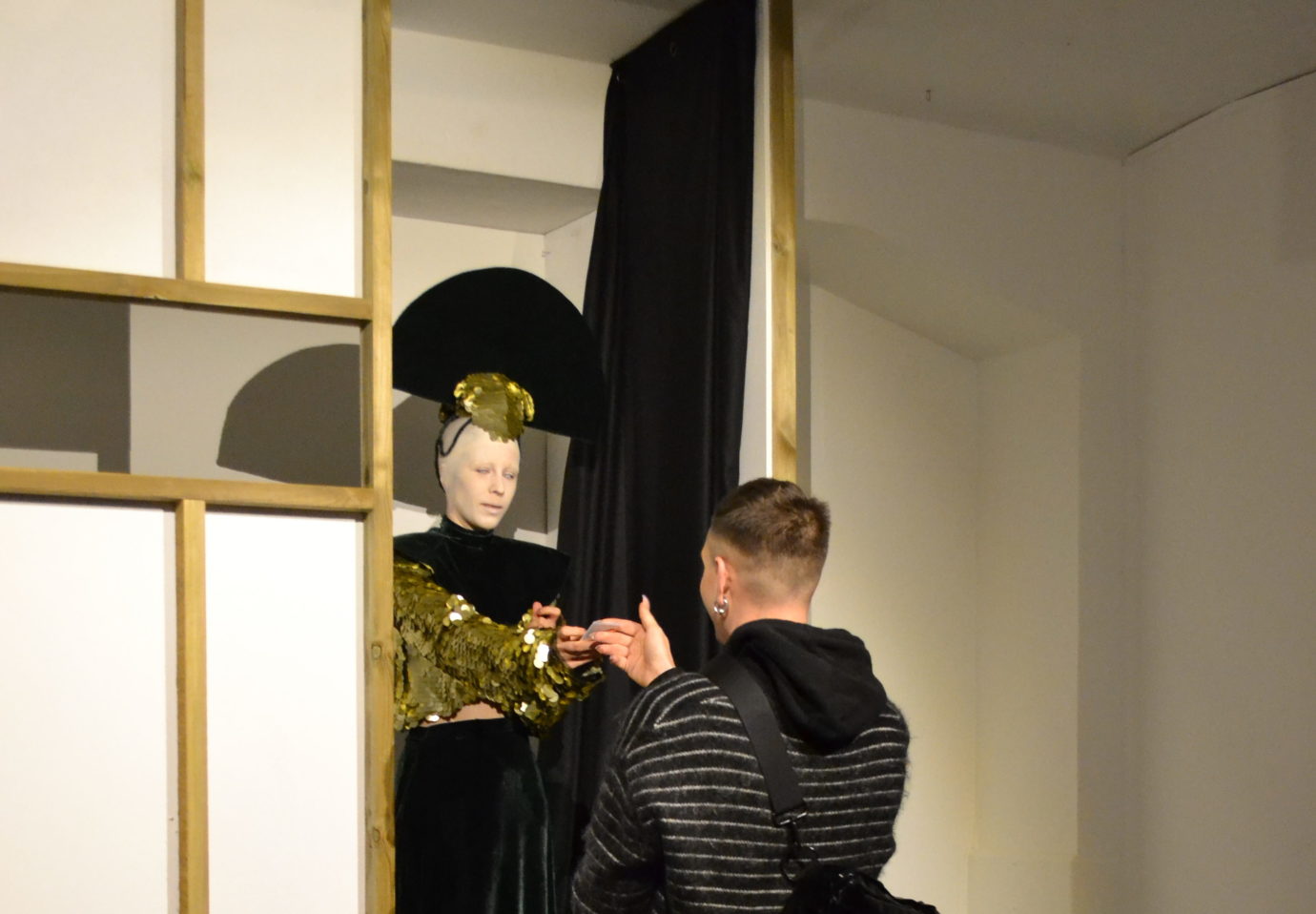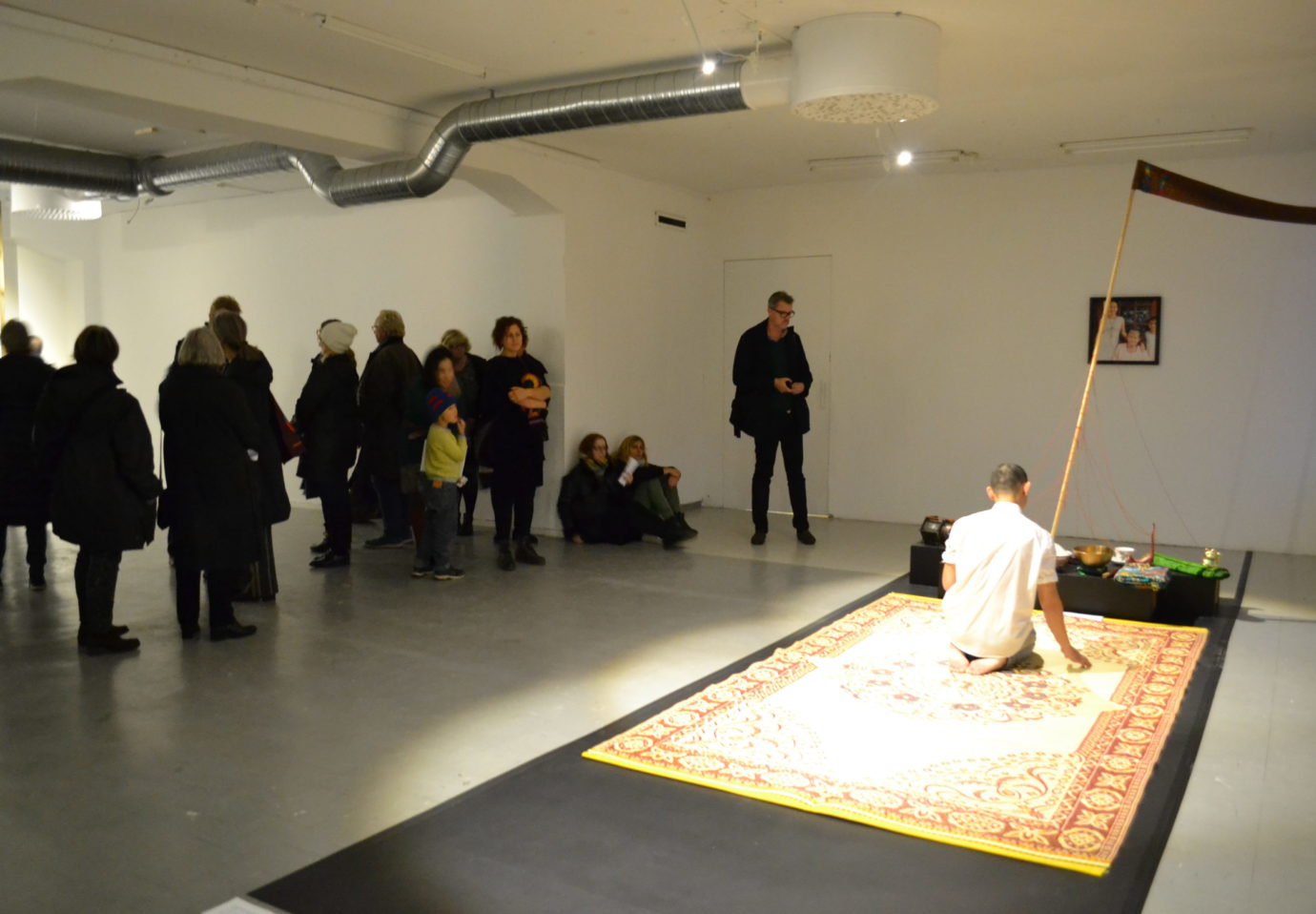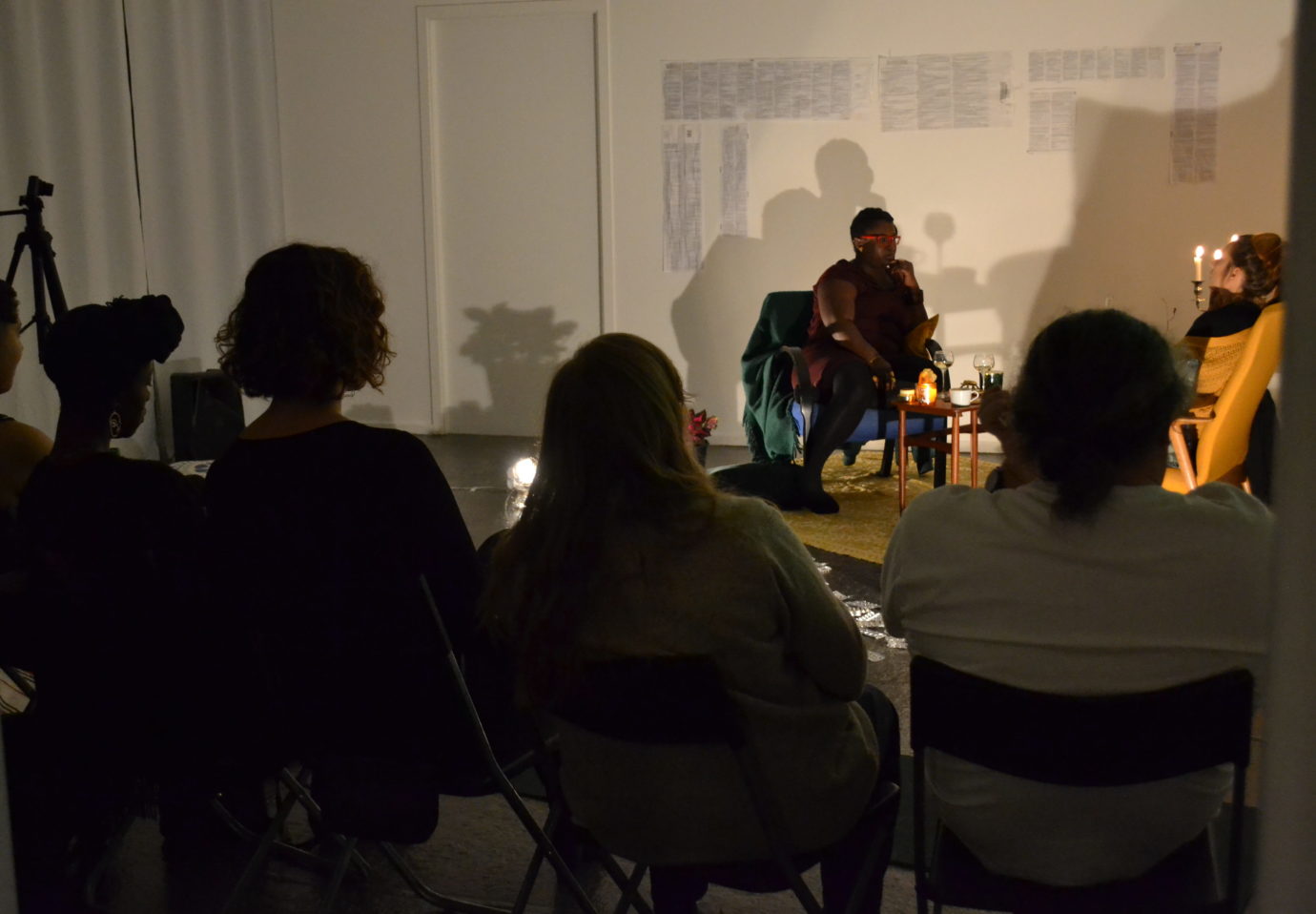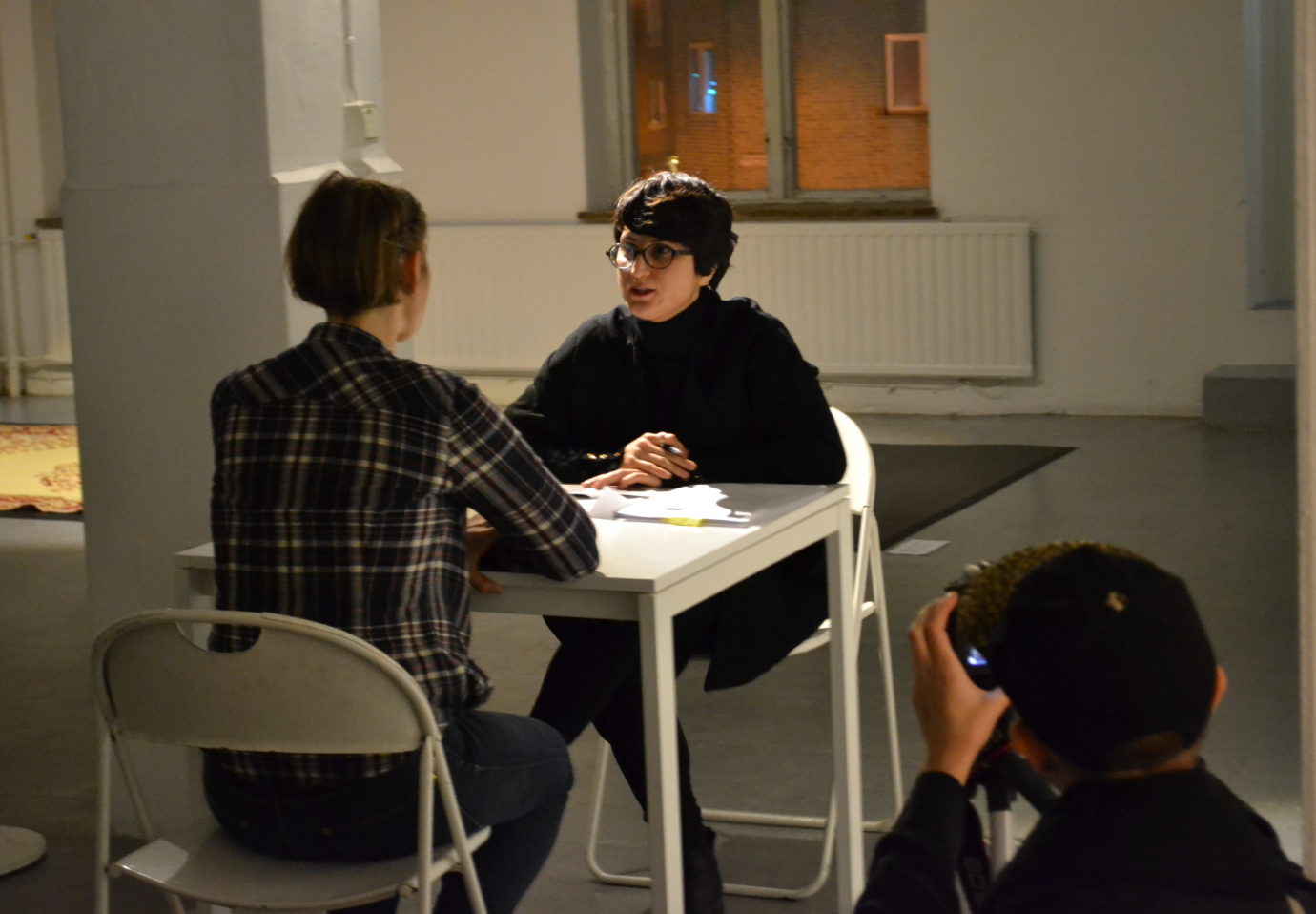Weekly Mass
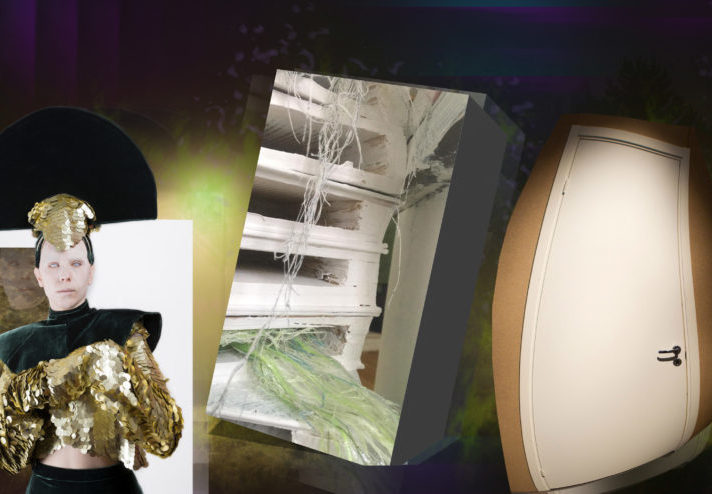
Weekly Mass
with Bahareh Mirhadi och Arash Mirhadi, Hhamlane Halsackda, Maria Norrman, SYSTERIA kollektiv
October 19 – November 11, 2018
Exhibition and performances
Weekly Mass 1: The Gathering
Friday, October 19, 6 pm.
A long dinner table with food offerings awaits you at 6 pm. We invite you to break bread and to queer linearity and affect with us. Do not come late to the gathering, as the artists and curators will tell stories about the years preceding the process of the Weekly Mass. You can commune also in the work and the dialogue which was shared this past month. We invite you to a performative and relaxed talk to meet the artists, reflect on time spans and on consolation, in all its generic, powerful nuances.
The gathering breaks up the tradition of what an opening can be. It is both the passage to and the beginning of Weekly Mass. It is a chance to encounter the artists and to brace for their performances.
Weekly Mass 2: Khamlane Halsackda and Maria Norrman
Saturday, October 27, 6 pm
More information about the event will follow soon.
Weekly Mass 3: Bahareh Mirhandi & Arash Mirhadi and SYSTERIA art collective
Friday, November 2, 6 pm
More information about the event will follow soon.
Weekly Mass is an exhibition and series of performances within constructed installations, focused on ideas and mechanisms related to consolation. Each action and its physical frame are stemming from ongoing personal experiences of the participating artists. They call upon possible deconstructions and reinterpretations of rituals that have shaped their lives: religiously or spiritually structured rituals, institutional rituals of coercion or daily rituals of oppression. Combining references to holy books or ancient oral histories with those from the bibliographical pool of contemporary disquiet, each Mass may function as a device of consolation. Each new performance will bring a new subject of reflection, from topics such as: transgressive language and the coded language of specific communities, wordings and embodiment of collective grievance, untold stories of fragility and power regained.
The performances may be a point of departure for us to lament and understand, more and more, how we embody or are affected by words and our own experiences, and how performance practice can work with such affects or become means of consolation and support. Perhaps they could be called a dwelling room for God and the Devil, the epistemic good and bad – but what are the words and gestures used and the experiences of condemnation, blame, consolation and fight?
Bahareh Mirhadi was born on April 20, 1985 in Shiraz, Iran. She is an Iranian artist currently living in Malmö, Sweden. She received her Bachelor in Painting in Iran, then she continued her education at the Umeå Art Academy in Umeå, Sweden and graduated with a Master of Fine Arts in 2012. In Iran, she worked with figurative painting and drawing, concerning herself and events happening in her life. Since moving to Sweden, her painting revolves around her surroundings and society. Nowadays working mostly with film and performance, she explores themes such as migration, human action and reaction, patience and tolerance, and ways people are enforced/controlled – and ways people control themselves – in society.
Arash Mirhadi was born on Feb. 6, 1980 in Shiraz, Iran. He received his Bachelor degree in handcraft from Isfahan University of Art in 2004. He moved to Tehran in 2008 and afterward gained his Master degree in Painting from the Faculty of Art and Architecture of the Islamic Azad University of Tehran center. He works primarily in painting and graphic design but is also active in photography, illustration and printmaking.
Khamlane Halsackda has been working in dance for 20 years and has danced for companies such as Richard Alston Dance Company, Wayne McGregor – Random dance, Rafael Bonachela dance company, Fabulous Beast dance theatre, and Nigel Charnock + Co, just to name a few. In his own words: “Since 2006 I have been making performative work that takes up my own real experiences and offers this as a way to be vulnerable in front of the public to encourage openness, in myself and therefore in others. By candidly holding up my own beliefs I directly challenge them and the beliefs of others with the ambition of creating awareness and debate about what universally impacts every individual.” Apart from artistic motivations he is very much focused on creating projects that uses creative dance to reach and connect with artistic and public communities. Past projects have included international exchanges between young dancers, summer schools, public performances, and in 2017 he was selected for Dansnät Sverige’s co-production, that included SFI students in creating a performance about learning Swedish.
Maria Norrman mainly works with video and photography, in combination with performance and costume making. Norrman use herself and different characters in her work. The works explore the meeting between hers and other people’s fantasies and topics such as war history, gender and sexuality. Her method often consists of different types of role plays where body, clothing and identities are central starting points. Norrman was born in 1987 and received her MFA from Malmö Art Academy in 2013.
SYSTERIA art collective describes themselves as a royal art collective consisting of creatives from anti racist, anti fascist and queer movements that, through art, fight given structures within but not secluded to, racism, sexism, heteronormativity, gender norms, capitalism and the climate’s downfall. The collective’s work is portrayed and explored through various artistic practices including but not exclusive to; nature, spray cans/graffiti culture, textiles, paintings, performance art and poetry. SYSTERIA art collective is based in Malmö / Bali.
Curators: Simona Dumitriu, Tawanda Appiah.
Thank you: Linus Svensson, Konsten att Mötas*, Unicorn Artists in Solidarity and Sveriges konstföreningar.
* Konsten att Mötas (Art to Meet)
The National Association of Swedish Art Societies through the project (Art to Meet) will create new exciting meetings and creative collaboration processes, while facilitating newly arrived artist to enter the Swedish art scene. Art associations are an important part of civil society and, like many other non-profit organizations, they have a significant function in creating integration models and working to change the norms and attitudes of society in an inclusive manner.
Through The National Association of Swedish Art Societies, participating artists will gain access to a nationwide network of art scenes on local, regional and national level. At the same time as art associations are given the opportunity to meet interesting and inspiring artistry that can open up the associations for new audiences and art-interested public.
“The Art to Meet” is carried out in collaboration with the Artists’ National Association (KRO) and their ongoing projects “The Art to Share: Image and Form” which aims to establish a national network and a mentorship program for foreign-born cultural creators living or staying in Sweden, And the student association Sensus. The project fund is through The National Lottery Cultural Fund.
